Breast Cancer Education is Key
Risk Factors
- Alcohol: Consuming more than one alcoholic drink a day increases your risk of developing breast cancer.
- Obesity: Being overweight, particularly after menopause, can significantly raise your risk due to higher estrogen levels in the body.
- Smoking: Tobacco use is linked to a higher risk of breast cancer, especially in premenopausal women.
- Inactive Lifestyle: A sedentary lifestyle can contribute to weight gain and higher estrogen levels, both of which are risk factors for breast cancer.
- Radiation Exposure: Exposure to radiation, particularly to the chest area at a young age, can increase the likelihood of developing breast cancer later in life.
- Family History / Genetics: Having close relatives with breast cancer, especially at a young age, or inheriting specific genetic mutations like BRCA1 and BRCA2, significantly raises your risk.
- Age: Approximately 80% of women diagnosed with breast cancer each year are 45 years old or older.
- Gender: Being a woman is the most significant risk factor for breast cancer, though men can also develop the disease.
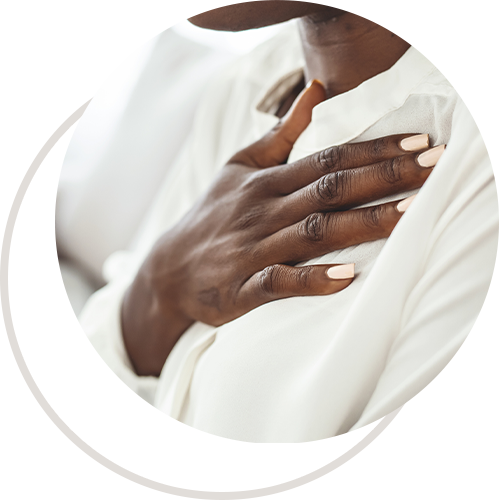
Signs and Symptoms
- Lump or Thickening: Any lump or thickening in or near the breast or underarm area that persists through your menstrual cycle.
- Change in Size or Shape: Noticeable changes in the size, shape, or appearance of your breasts.
- Skin Changes: Dimpling, puckering, or redness of the skin on the breast.
- Nipple Changes: Inverted nipples or sudden nipple discharge, especially if it’s bloody.
- Pain: Persistent pain in any area of the breast that is not related to your menstrual cycle.
- Swelling: Unexplained swelling of the breast, especially if it affects only one side.
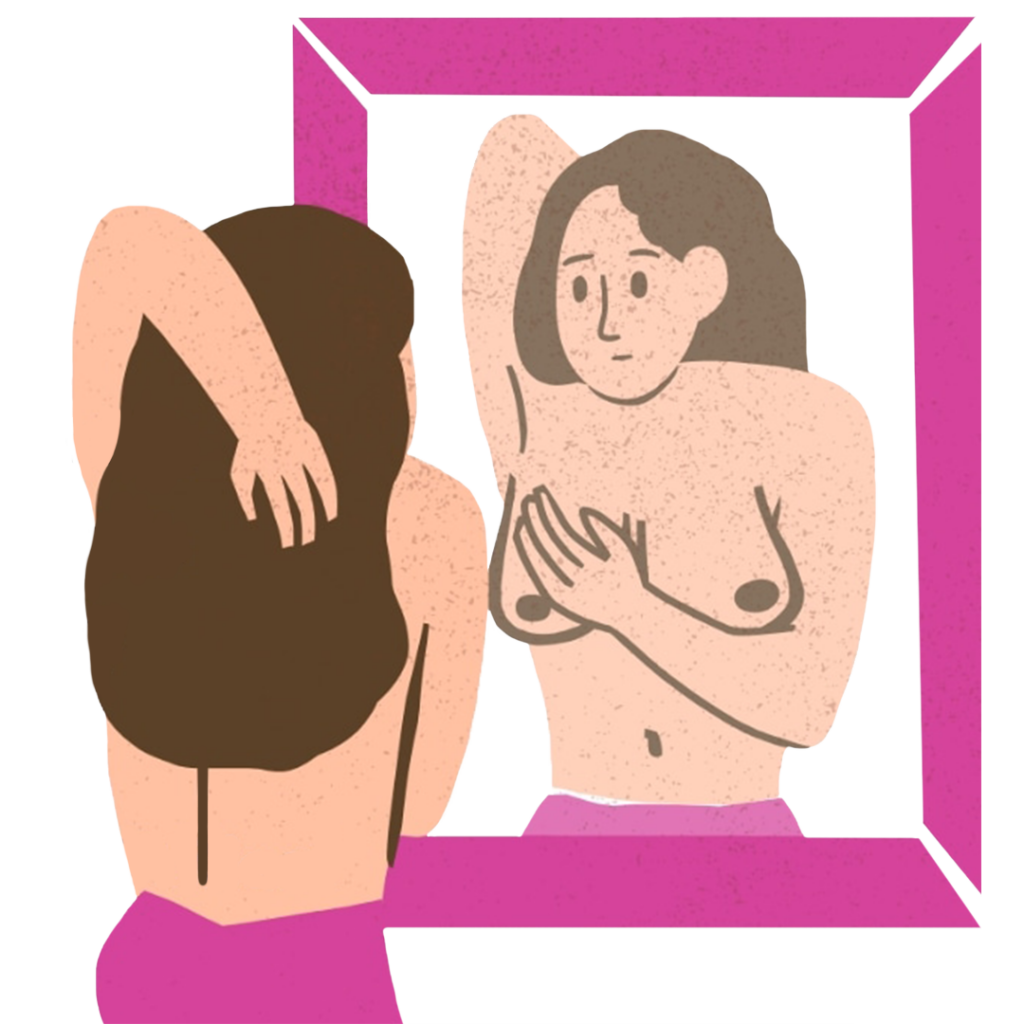
Cancer Classification and Stages
Classified by (1) size and location of tumor (2) whether the cancer has spread to nearby lymph nodes or other parts of the body (3) grade of tumor, or how likely it is to grow/spread (4) Whether certain biomarkers – hormone receptors or other proteins – have been formed
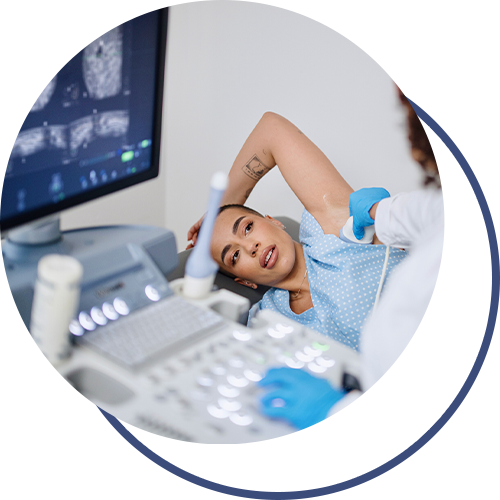
Stage One: Size and location of tumor
Stage Two: Whether the cancer has spread to nearby lymph nodes or other parts of the body
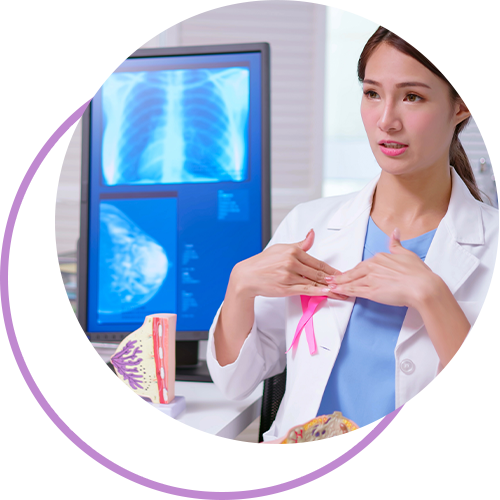
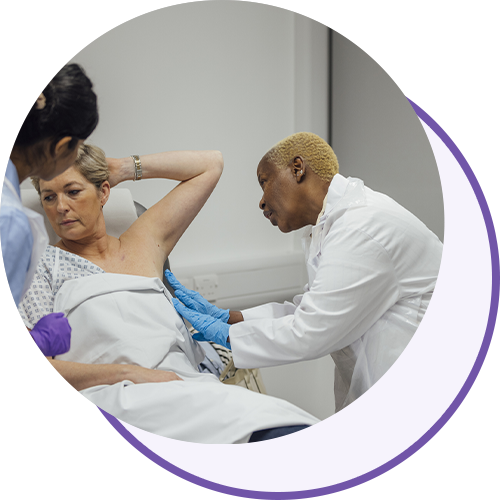
Stage Three: Grade of tumor, or how likely it is to grow/spread
Stage Four: Whether certain biomarkers - hormone receptors or other proteins - have been formed
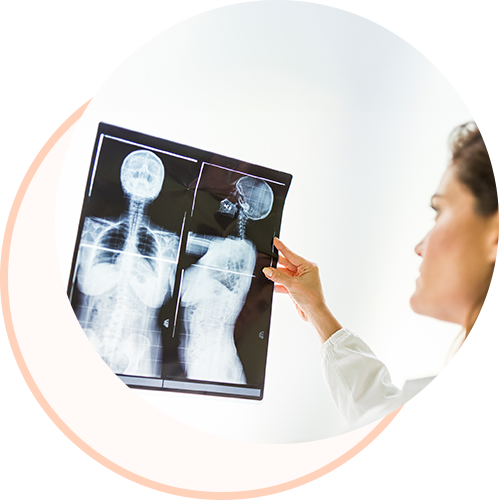
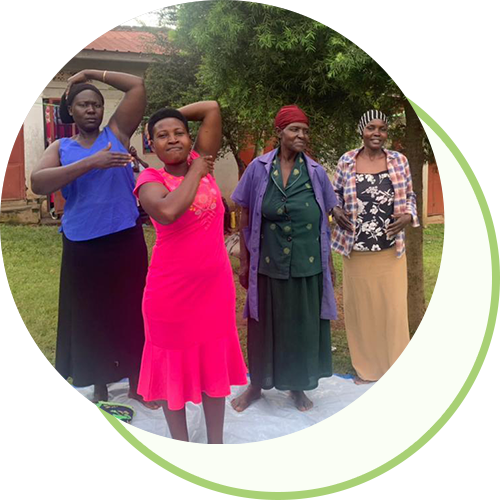
Breast Self-Exam
(Teach the Teachers)
Visual Inspection
- Stand in front of a mirror with your arms at your side
- Look for changes in size, shape, or contour
- Check for dimpling, puckering, or changes in skin texture
- Note any changes in the position or appearance of your nipples
- Repeat the steps above with your arms in the air
- Look for fluid: gently squeeze each nipple and check for discharge – this could be a watery, milky, or yellow fluid, or blood.
Breast Self-Exam
(Teach the Teachers)
Lie On Your Back
- Check for lumps or abnormalities by feeling your breasts while lying down
- Use the opposite hand to examine each breast, using a circular motion and different pressure levels
- Pay attention to the underarm area and around the collarbone
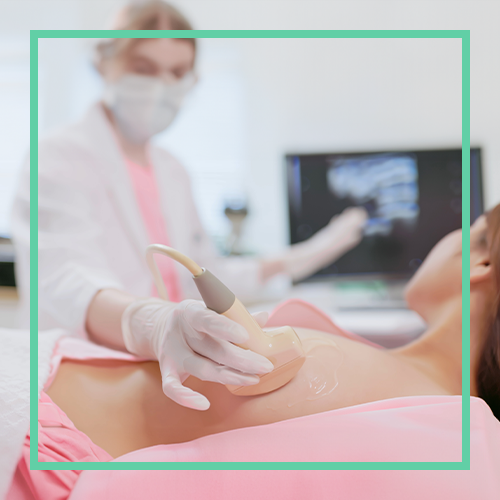
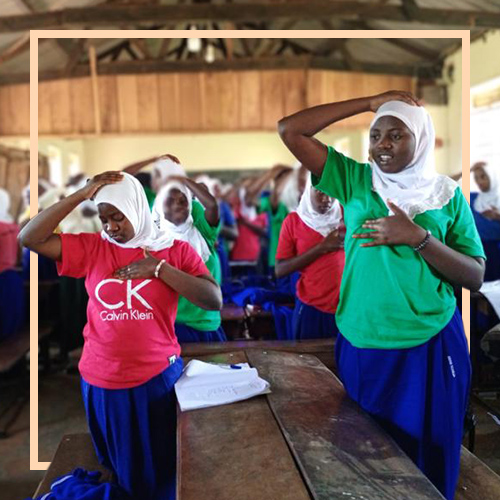
Breast Self-Exam
(Teach the Teachers)
Standing or Sitting
- Check for lumps using circular motions while standing or sitting
- Many women find that its easier to feel for lumps when their skin is wettened, so doing this step in the shower is recommended
Introducing the E.R.I.C. Promise Bracelet, in Partnership with LadyBWell
Crafted with love in Southern India, the E.R.I.C. Promise Bracelet is a creation of passionate, differently-abled artisans who share our vision. This bracelet isn’t just an accessory; it’s a daily reminder that breast cancer, with early detection, is largely preventable. It symbolizes the responsibility to perform regular breast self-exams and make healthy life choices. Wear it with pride, affirming your commitment to your health.
E.R.I.C. and LadyBWell are united in spreading the message: early detection is crucial in the fight against breast cancer, a disease that affects women of all ages. Let’s challenge the myths that breast cancer only impacts older women or is incurable. In truth, it affects younger women globally, and most lumps are discovered by individuals themselves.
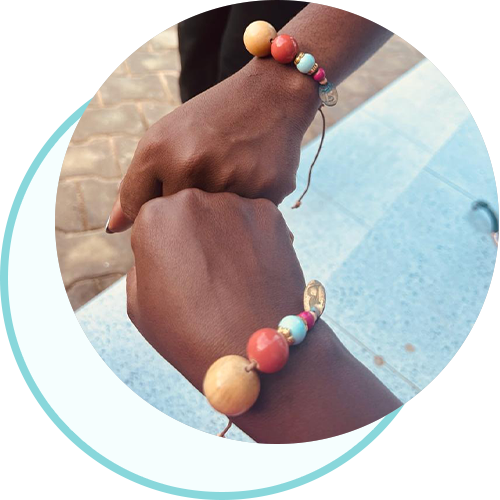
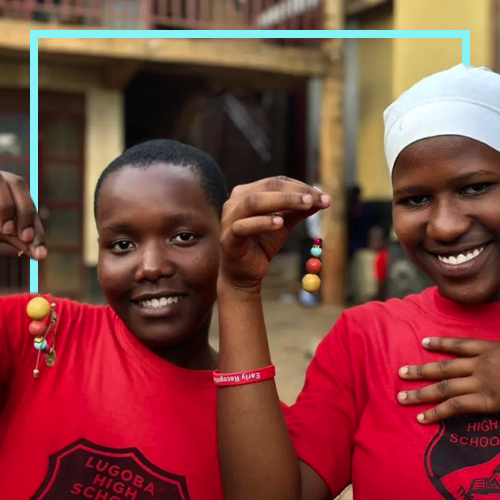
The Symbolism of Your Promise Bracelet
- The largest bead represents the average size of a lump found through self-detection.
- The second-largest bead signifies the size detected through skilled manual examination.
- The #10mmYouWin shiny blue bead: This represents detections made by professionals using certified techniques. International studies show that breast cancer is 99% curable when lumps are detected at or under ten millimeters in diameter or less.
- The two smallest beads symbolize detections through mammograms, sonograms, and advanced technologies.
Your Promise Bracelet is a symbol of the powerful link between personal vigilance (‘me- tech’) and professional healthcare (‘high-tech’). Early detection means a future filled with health and happiness.
#10mmYouWin: Embrace It as Your Goal. Simple. Powerful. True.
The E.R.I.C. Promise Bracelet, in Partnership with LadyBWell
By combining personal vigilance with professional support, we empower women to take charge of their health and happiness.
Join our global movement. Wear your Promise Bracelet proudly as a conversation starter and be a part of educating, screening, and saving lives. With E.R.I.C. and LadyBWell, let’s play it forward and protect the lifelong happiness of our loved ones.

Q & A:
Myths and Facts
Myth
Only women with a BRCA gene
mutation can get breast cancer.
Truth
Myth
Cancer is all about genetics.
Truth
Myth
Cancer is always a death sentence.
Truth
It’s not over! Many people survive cancer and thrive after it. The U.S. cancer death rate has dropped by 33% since 1991, primarily due to advancements in treatments, improved early detection, and a significant decrease in to bacco use.
Myth
Cancer screenings are only necessary if you have symptoms.
Truth
Regular screenings, even in the absence of symptoms, are crucial for early detection and improved cancer outcomes.
Myth
Only women can get breast cancer.
Truth
Myth
If you have no family history of cancer, you won't get it.
Truth
Many people with cancer have no family history of the disease. While family history does influence your cancer risk, other factors such as lifestyle choices and random genetic mutations also contribute to the development of cancer.
Myth
Cancer is a single disease with a single cure.
Truth
There are no universal cure for all types of cancer. Since each cancer has its own characteristics and challenges, treatment approaches vary.
Myth
All lumps in the breast are cancerous.
Truth
A lot of breast lumps are benign (non-cancerous) and can be caused by various factors such as cysts or fibroadenomas. However, any new or unusual lump should be evaluated by a healthcare professional!
Facts
- Breast cancer is the second leading cause of cancer death in women; only lung cancer kills more women each year
- The chance that a woman will die from breast cancer is about 1 in 39 (about 2.5%)
- Breast cancer death rates have been decreasing steadily since 1989, for an overall decline of 43% through 2020
- As breast a cancer mortality has decreased in high income countries such as the USA, mortality rates have increased in low/middle income countries such as Colombia.
- Incidence rates, the number of people being afflicted with breast cancer, have remained relatively constant in higher income countries, but are on the rise lower to medium income countries.
- This has lead to breast cancer becoming the cancer accounting for the most deaths in over 110 countries, concentrated mostly in low and middle income countries
- When breast cancer is detected at an early stage, treatment is more effective and a cure is more likley.
- In high-income countries, breast cancer is often diagnosed at an early stage and the prognosis is good
- In low/middle income countries, however, breast cancer is more often diagnosed at a later stage after the disease has progressed, and survival is poorer.
- Five year survival is 85% or higher in the US, Canada, Australia, and many Northern and Western European countries
- While it is 60% or lower in many lower to middle income countries, such as Colombia, Uganda, and Venezuela, and India
